
Are you looking to invest in cryptocurrencies but unsure which ones to buy? With numerous options available, it can be challenging to decide where to put your money. That’s why we’ve compiled a list of the top 10 cryptos to buy now, considering factors like project developments, price performance, market capitalization, and growth potential.
In this article, we’ll examine the most promising cryptocurrencies, including well-known ones like Bitcoin and Ethereum, and several other promising projects. We’ll discuss their features, benefits, and potential drawbacks, along with insights into market trends. Whether you’re a seasoned investor or just starting out, this article will help you make an informed decision about the best cryptos to buy now.
Here is the list of the top 10 cryptocurrencies to invest in June 2024:
Let’s dive in and explore the best cryptocurrencies to invest in June 2024:
1. ZKsync – A Leading Layer 2 for Ethereum
ZKsync is a layer 2 scaling solution for Ethereum, designed to enhance scalability, efficiency, and user experience while maintaining core security and decentralization principles. Developed by Matter Labs, ZKsync uses zero-knowledge rollups (zk-rollups) to bundle multiple off-chain transactions into a single proof, which is then verified on-chain. This method significantly reduces gas fees and increases transaction throughput, making transactions faster and cheaper compared to the Ethereum mainnet.
One of ZKsync’s key advantages is its compatibility with Ethereum’s smart contracts, allowing developers to integrate and deploy decentralized applications (dApps) easily. Users can continue using their existing Ethereum wallets with ZKsync, ensuring a seamless transition and broad accessibility.
The security model of ZKsync is robust, leveraging cryptographic proofs to ensure the validity of off-chain transactions. This model maintains the network’s trustlessness, as zk-rollups can be verified by any Ethereum node, upholding the blockchain’s integrity and security.
Why ZKsync?
After months of anticipation, ZKsync’s native token, ZK, was listed on several crypto exchanges, including Binance, Bybit, gate.io, MEXC, and KuCoin. The token started trading at around $0.26 and experienced a 7% drop within the first few hours.
Interestingly, the launch of the platform’s native token led to a 10% dip in ZKsync’s Total Value Locked (TVL) over the past week. Despite this decline, ZKsync Era remains one of the largest Layer 2s on Ethereum, with $144 million worth of digital assets currently locked on its rails. 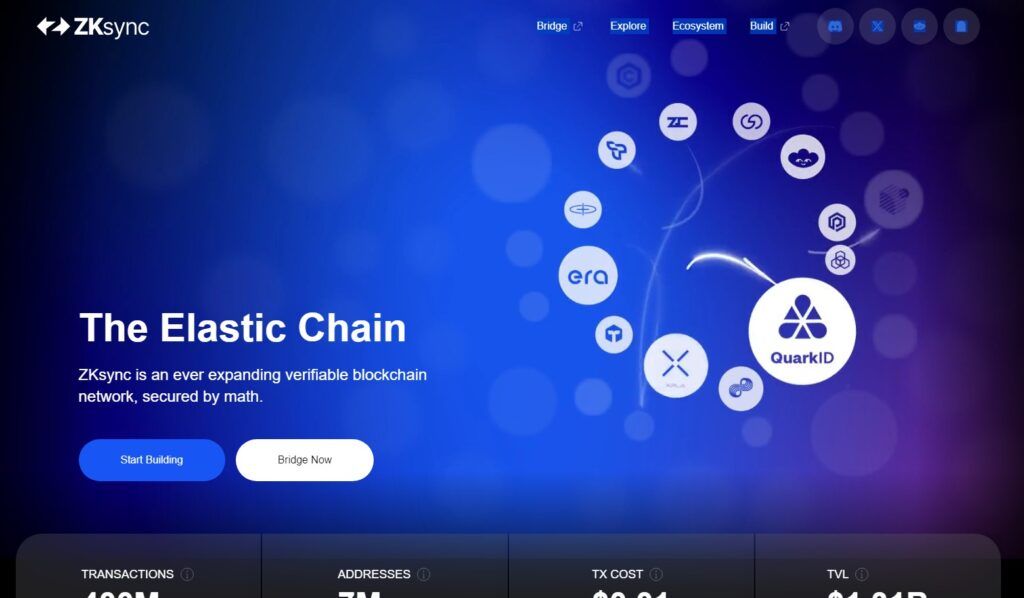
The ZKsync team plans to distribute the new token to its community via a one-time airdrop. Nearly 696,000 eligible wallets will receive their allocated share of ZK. The smallest allocation is 450 ZK, and the largest is 100,000 ZK (worth about $25,000 at current rates). The exact allocation for each user was based on their individual ZKsync network usage prior to the token’s launch. The token claim process will start on June 24 and last until January 3, 2025.
2. Uniswap – The Largest Decentralized Trading Protocol
Uniswap is a decentralized exchange (DEX) operating on the Ethereum blockchain. Created in 2018 by Hayden Adams, it allows users to trade various cryptocurrencies without an intermediary or central authority.
Uniswap employs an automated market maker (AMM) system, meaning there is no order book or centralized exchange to match buyers and sellers. Instead, liquidity providers (LPs) contribute funds to liquidity pools, which are used to execute trades. Traders can swap one cryptocurrency for another by exchanging tokens with the liquidity pool, which uses a mathematical formula to determine the exchange rate.
The native cryptocurrency of the Uniswap platform is UNI, used for governance and providing incentives to liquidity providers. UNI holders can participate in platform governance, including proposing and voting on protocol changes.
Since its launch, Uniswap has grown to become the most popular decentralized exchange in the cryptocurrency ecosystem, with billions of dollars in trading volume and a large community of users and developers.
Why Uniswap?
Uniswap’s native token, UNI, has been the largest gainer among the top 100 cryptocurrencies in the past week, recording a +12% uptrend. This surge helped UNI establish a new multi-week high during a period when many cryptocurrencies struggled to post gains.
According to on-chain data, the token’s price increase coincided with promising market data. The open interest for UNI peaked at $168 million earlier in June, indicating investors’ interest in the token. For context, the open interest was $85 million a month ago. While this doesn’t guarantee UNI’s value will increase, it suggests investors are optimistic.
On June 14, Uniswap announced support for ZKsync, allowing Uniswap trades to be executed on the highly efficient layer 2 network for Ethereum. This means lower fees and faster transaction times for Uniswap users.
3. BNB – A Popular Crypto Asset Supported by the World’s Largest Exchange
BNB, originally launched by the Binance cryptocurrency exchange in 2017, is a token with two main roles. Token holders enjoy exclusive perks on Binance, such as reduced trading fees, access to the exchange’s Launchpad and Launchpool programs, cashback rewards on Binance Visa card transactions, and more.
Additionally, BNB serves as the native asset for the BNB Chain blockchain. BNB Chain, a variation of Ethereum, offers users lower transaction fees and supports EVM-compatible decentralized applications, providing an easy transition for developers accustomed to building on Ethereum. Originally named Binance Coin, BNB has undergone comprehensive rebranding in recent years.
Why BNB?
BNB has been one of the best-performing cryptocurrencies recently. The native digital asset of the BNB Chain reached a new all-time high of $719 on June 6. This new ATH followed an interesting trend over the past few weeks, during which BNB traded closer to its ATH than virtually any other major crypto.
Several factors have contributed to BNB’s strong performance. One major factor is the increase in Binance Launchpool campaigns, which allow BNB holders to stake their holdings and gain access to tokens of promising new projects launched on the Launchpool platform. In the past two months alone, we’ve seen the launch of Renzo Protocol, Omni Network, Saga, and Ethena.
In addition to Launchpools, Binance recently announced a new feature providing BNB holders with extra utility. Users can lock their BNB and complete tasks to earn tokens of projects listed on Megadrop and earn interest on locked BNB. 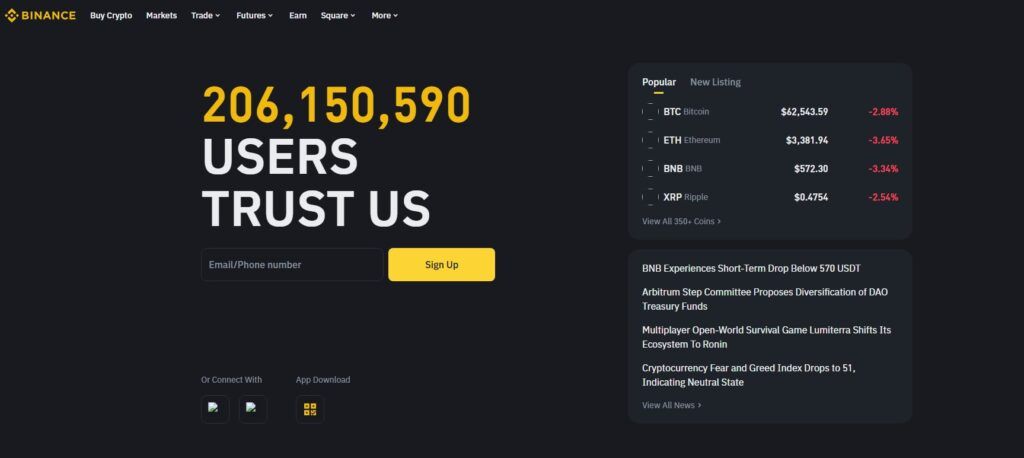
During the first Megadrop, users who staked their BNB earned about 100% APY for the duration of the BounceBit Megadrop campaign. The second Megadrop campaign is already underway, allowing users to lock their BNB and complete various Web3 tasks to earn Lista tokens.
Recently, BNB Chain announced a new initiative aimed at fostering closer collaboration with Binance’s venture arm. As part of the initiative, a new “incubation alliance” for early Web3 projects will be launched.
The BNB Incubation Alliance (BIA) will help projects during their early-stage development journey and allow them to access BNB Chain’s launch-as-a-service program, which includes $300,000 in free services (including security and infrastructure).
4. Toncoin
Toncoin is a platform comprising multiple components. One of its main components is the TON Blockchain (with TON standing for “The Open Network”), a flexible multi-blockchain platform capable of processing millions of transactions per second. It supports Turing-complete smart contracts, upgradable blockchain specifications, and multi-cryptocurrency value transfers. The TON Blockchain incorporates unique features such as a self-healing vertical blockchain mechanism and Instant Hypercube Routing, ensuring fast, reliable, scalable, and self-consistent operations.
Additionally, the Open Network includes the TON P2P Network for accessing the TON Blockchain, TON Storage for distributed file storage, TON Proxy for privacy protection, TON DHT for distributed hash table functionality, TON Services for platform-based services, TON DNS for human-readable naming, and TON Payments for micropayments. TON aims to make blockchain and distributed services more accessible by integrating with popular messaging and social networking apps like Telegram (which already supports TON and BTC transfers).
The native cryptocurrency of the Open Network is Toncoin, used to facilitate deposits to become a validator and cover transaction fees and gas payments (fees incurred from smart contract message processing).
Initially, the Open Network was launched as the Open Telegram Network by the Telegram team but was later rebranded as the community took over the project’s development. Telegram withdrew from development in 2020 after litigation with the Securities and Exchange Commission (SEC), which accused the company of selling unregistered securities.
Why Toncoin?
After Tether expanded its USDT offering to the Telegram Open Network blockchain earlier this year, Toncoin has made several moves to rapidly grow the adoption of the stablecoin among Telegram users.
As part of the USDT launch, the Toncoin team announced a special promotion as part of its TON Earn program, allowing users to earn between 25% and 50% APY on USDT deposited in their TON Wallet.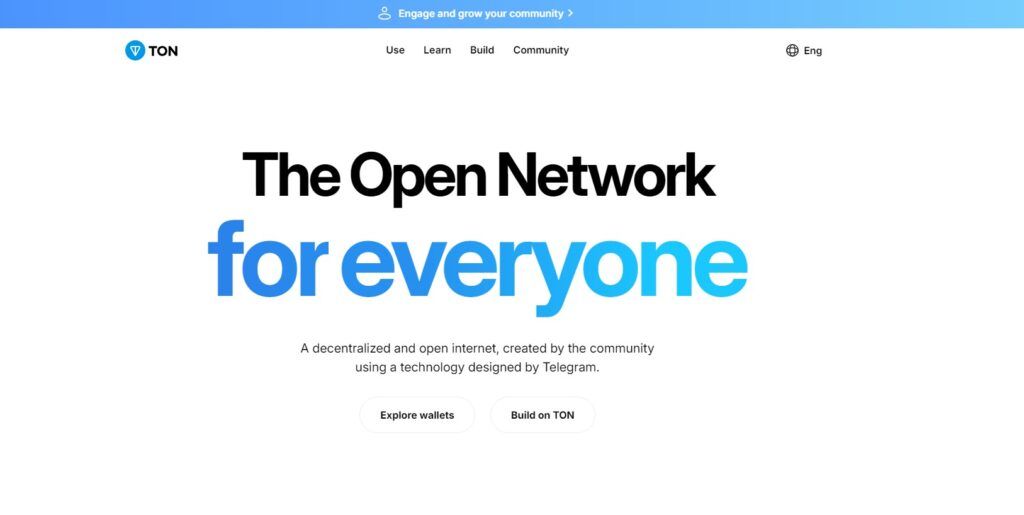
The promotion was initially slated to end on June 10, but Toncoin decided to prolong the initiative, allowing participants to continue earning 25% APY on their USDT (paid in TON rewards) for the time being.
The Toncoin team is committed to providing more options to trade TON and USDT on global and local exchanges over the coming weeks and months.
5. Stacks
Stacks is a unique cryptocurrency designed to bring smart contracts and decentralized applications (dApps) to the Bitcoin blockchain. Unlike many other cryptocurrencies, Stacks enhances Bitcoin’s functionality without modifying its core code. It achieves this through a layer-1 blockchain that connects to Bitcoin, using Bitcoin’s robust security.
The innovative Proof-of-Transfer (PoX) consensus mechanism links Stacks to Bitcoin by using BTC to mint new STX tokens, rewarding participants who secure the network. This approach allows developers to build on Bitcoin’s stability and widespread adoption while enabling advanced functionalities such as DeFi, NFTs, and smart contracts.
Stacks is supported by Clarity, a programming language optimized for predictability and security, reducing the risk of bugs and exploits. By leveraging Bitcoin’s established infrastructure, Stacks aims to bridge the gap between Bitcoin’s long track record of reliability and the growing sector of decentralized applications.
Why Stacks?
Stacks has been on quite an uptrend since the end of 2023, gaining more than 140% in that period. The uptrend continued last week, with the cryptocurrency recording a +15% rise, the third highest out of all digital assets in the cryptocurrency top 100.
According to DeFi Llama, the number of STX locked in the Stacks protocol reached a new all-time high on June 3, with nearly 63 million tokens locked (worth about $137 million at current market rates). 
One interesting announcement that could contribute to Stacks’ continued growth is the “Code for STX” initiative, which aims to attract new developers to the ecosystem. According to the blog post, the company plans to distribute 10,000 STX every month to “all developers who are actively working on a [Stacks-related] project.” The distribution of prizes among eligible participants will be done via a random draw. The promotion will run from June to August, with the prizes awarded by the 15th of the following month.
6. Ethereum
Launched in 2015 by Vitalik Buterin and a team of developers, Ethereum is a decentralized, open-source blockchain platform that allows developers to build decentralized applications (dApps) and smart contracts.
Ethereum has a wide range of use cases beyond just a store of value or medium of exchange. Ethereum’s smart contract functionality allows developers to build dApps that can run without the need for intermediaries, like centralized servers or institutions.
The Ethereum platform has gained widespread adoption and has become the backbone of the decentralized finance (DeFi) industry. DeFi applications built on Ethereum allow users to access financial services without relying on traditional banks or financial institutions. Ethereum’s smart contract functionality has also enabled the creation of non-fungible tokens (NFTs), which have gained popularity in the digital art and gaming worlds.
While Ethereum has a strong community and has been highly influential in the cryptocurrency industry, it also faces challenges, such as scalability issues and high gas fees. These issues have spurred the development of various Layer 2 scaling solutions. In the long run, future updates are expected to massively increase Ethereum’s throughput, bringing the transaction per second (TPS) figure from 15 to 100,000.
Why Ethereum?
On May 24th, the Securities and Exchange Commission (SEC) approved applications for spot Ethereum ETFs. The approval follows a similar decision made by the SEC earlier this year when it approved Bitcoin spot ETFs.
In total, eight Ethereum ETFs were approved, including Grayscale Ethereum Trust, Blackrock’s iShares Ethereum Trust, VanEck Ethereum Trust, and Fidelity Ethereum Fund.
The SEC’s approval of Ethereum ETFs came as a bit of a surprise. Earlier this year, the agency’s comments were mostly focused on Ethereum potentially being classified as a security due to the implementation of the Proof-of-Stake (PoS) consensus. However, in recent weeks, the agency changed its stance, and experts raised the likelihood that Ethereum spot ETFs would be approved from 25% to 75%. 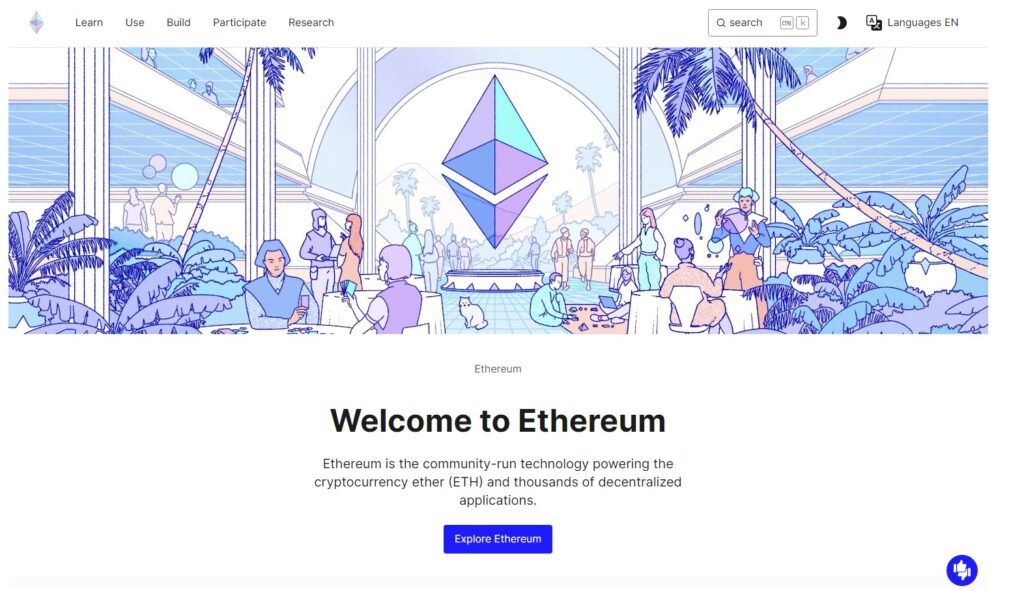
In the days surrounding the critical decision, the price of Ethereum shot up from roughly $3,100 to $3,800, increasing by more than 25%. Ethereum also recorded a significant relative price increase compared to BTC, which gained about 2.5% in the same period.
It will be interesting to see whether ETH follows a similar market trend to Bitcoin after the ETF approvals. When the spot Bitcoin ETFs were approved, BTC was trading at around $46,000, but it quickly gained about 50% in the weeks and months after that, reaching as high as $73,000.
7. Bitcoin
Bitcoin (BTC) is the original decentralized digital currency, enabling peer-to-peer transactions without the need for intermediaries such as banks or financial institutions. It was created in 2009 by an unknown person or group using the pseudonym Satoshi Nakamoto. Bitcoin was the first digital currency to eliminate the double-spending problem without resorting to any central intermediaries.
Bitcoin transactions are recorded on a public ledger called the blockchain, which is maintained by a network of computers worldwide. This means that transactions are secure and transparent, as anyone can view them, but they are also anonymous, as the identity of the participants in the transaction is not revealed.
BTC can be traded on cryptocurrency exchanges and stored in a digital wallet, which is a software program that securely stores private keys required to access and transfer the currency.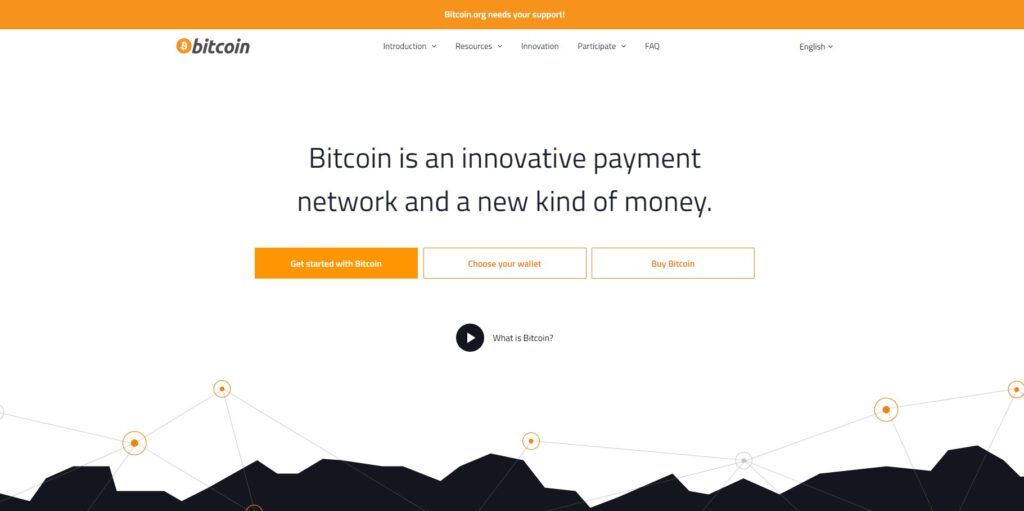
Bitcoin is often referred to as “digital gold” or a store of value, as it has a limited supply of 21 million coins, and its value is determined by market demand. Some people also see it as a hedge against inflation or a way to diversify their investment portfolio. It is by far the largest cryptocurrency by market cap in the industry, accounting for the value of more than 40% of all digital assets in circulation combined, making it arguably the most popular crypto to buy.
Why Bitcoin?
We’re now about a month and a half removed from the latest Bitcoin halving, and Bitcoin’s price has been relatively stable, mostly hovering between $60,000 and $70,000 (apart from short-lived outliers on both ends of the spectrum).
Glassnode’s assessment reflects what we’ve seen in the markets recently. At the moment, the bulls are in command, refusing to concede ground to the bears. Every time the price of BTC slipped below $64,000 in the last couple of weeks, buyers quickly pushed it up, which could be interpreted as many investors seeing the current levels as “cheap.”
Historically, each Bitcoin halving cycle has brought new all-time highs, supporting the argument of those who advocate buying Bitcoin ahead of a halving event. Here’s a quick breakdown of the highest and lowest prices in each cycle, as well as the BTC price at the time of each halving:
| Halving Cycle | Lowest Price | Highest Price | BTC Price at Date of Halving |
|---|---|---|---|
| 1st Halving Cycle (Nov 2012 – Jul 2016) | $12.4 | $1,170 | $12.3 (Nov 28, 2012) |
| 2nd Halving Cycle (Jul 2016 – May 2020) | $535 | $19,400 | $680 (Jul 9, 2016) |
| 3rd Halving Cycle (May 2020 – Apr 2024) | $8,590 | $73,600 | $8,590 (May 11, 2020) |
| 4th Halving Cycle (Apr 2024 – 2028*) | $56,780 | $66,990 | $64,795 (April 20, 2024) |
8. Lido
Lido is a DeFi project that allows users to earn rewards on their cryptocurrency holdings by staking them on various blockchain networks, including Ethereum, Polygon, and Ethereum’s layer 2 platforms. Staking involves locking up cryptocurrency as collateral to help validate transactions and maintain the security of a blockchain network, and in return, stakers receive rewards in the form of additional cryptocurrency.
Users who stake their ETH with Lido receive a tokenized representation of their staked ETH, called stETH, at a 1:1 ratio. stETH represents the user’s share of the total ETH being staked in the Ethereum network and can be freely traded on cryptocurrency exchanges.
One of the benefits of using Lido is that it allows users to earn rewards on their staked ETH without running their own staking node, which can be technically complex and requires 32 ETH, which is out of reach for most cryptocurrency users. Instead, Lido pools user funds together to create a large validator node, with each user receiving a share of rewards based on their pool contribution. While Ethereum is the largest staking pool run by Lido, tokenized versions of other supported tokens are also available (stSOL for Solana, stDOT for Polkadot, etc.).
The Lido project is governed by a decentralized autonomous organization (DAO) controlled by LDO token holders. LDO is used to incentivize participation in the governance process. Overall, Lido aims to make staking more accessible and user-friendly for the average cryptocurrency holder.
Why Lido?
The Lido staking platform has been growing at a very fast pace recently. Since January 2023, the total value of locked tokens on the platform has increased from $5.8 billion to $36.5 billion.
The lion’s share of locked funds is ETH coins (approx. $36.2 billion), deposited via the liquid staking option provided by Lido. Meanwhile, a much smaller share (about $83 million) belongs to MATIC. Users who stake ETH get stETH in return, which accumulates staking rewards at a rate of roughly 3.3% APY. 
To further expand the stETH ecosystem, the Lido team recently unveiled a proposal for Lido Alliance. The alliance focuses on restaking, which has become very popular with the rise of the EigenLayer protocol. “[Lido Alliance] is a governance process for Lido DAO to identify and recognize projects that share the same values and mission, and have a way to positively contribute to the stETH ecosystem,” wrote the team in its proposal.
Following the announcement of the new Lido framework about two weeks ago, the price of LDO skyrocketed by more than 50%, outperforming most top 100 crypto assets in the same period.
9. Arkham
Arkham Intelligence is a cutting-edge blockchain analytics platform that employs artificial intelligence to provide deep insights into blockchain transactions and activities. Central to Arkham’s capabilities is its AI engine, ULTRA, which de-anonymizes blockchain data, making it possible to track fund flows and uncover the real-world entities behind transactions. The platform is designed to enhance transparency and accountability within the blockchain space, making it more difficult for illicit activities to go undetected.
One of Arkham’s standout features is the Arkham Intel Exchange, the first of its kind, which facilitates a decentralized marketplace for blockchain intelligence. The platform allows users to buy and sell intelligence, and it supports an ‘Intel-to-Earn’ model where contributors can earn rewards for providing valuable data insights. This model is bolstered by Arkham’s native token, ARKM, which is used within the ecosystem for transactions, accessing premium features, and participating in governance through token staking.
Why Arkham?
The Arkham platform saw a slew of developments over the past couple of weeks, most prominently the rollout of token balance charts. The feature allows users to track blockchain balances of any token for any address over time. For example, you can track all inflows and outflows for BlackRock’s Bitcoin ETF or Bitcoin that was seized by the FBI from the Bitfinex hack. These are just some of the more prominent examples, but the bottom line is that the feature allows tracking of any address over time, contributing to greater transparency in the crypto space. 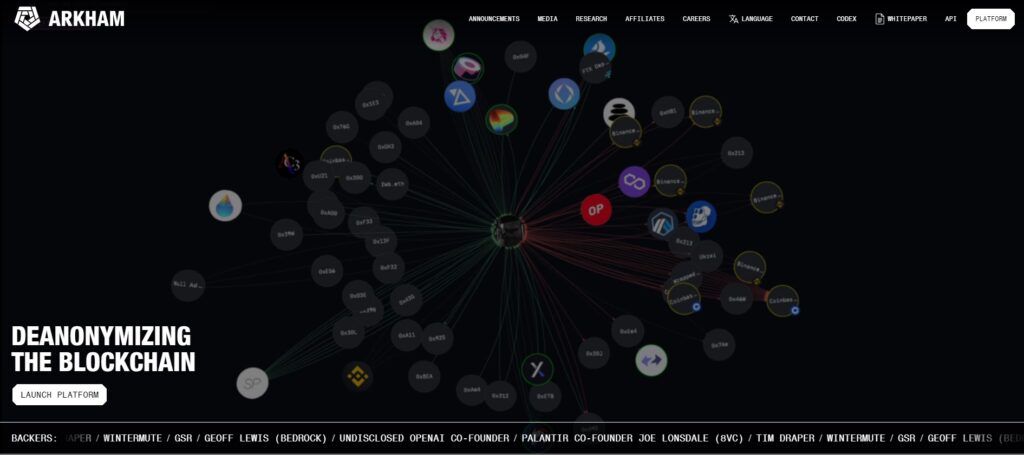
In addition to the token balance feature, Arkham recently revealed that it has partnered with The Open Network (TON). “We’re partnering with The Open Network (TON) to bring Arkham data to millions of TON & Telegram users,” the team wrote in a blog post.
Recent developments have apparently sparked a great deal of interest in the ARKM token in the markets. Over the past three months, ARKM gained more than 300%, 55% of which in the past month alone.
10. Solana
Solana is a cryptocurrency and blockchain platform that was created to provide a fast, secure, and scalable infrastructure for decentralized applications (dApps) and token issuance. It was launched in March 2020 by Solana Labs and quickly grew to become one of the largest blockchain networks in the sector.
Solana uses a unique consensus mechanism called Proof of History (PoH) which enables it to process thousands of transactions per second while maintaining a low transaction fee. This makes it one of the fastest and most cost-effective blockchains in existence.
In addition to its fast transaction processing speed, Solana also offers smart contract functionality and is fully compatible with the Ethereum Virtual Machine (EVM). This allows developers to build and deploy dApps on Solana using popular programming languages such as Rust, C++, and JavaScript.
The native cryptocurrency of the Solana network is called SOL, which is used as a medium of exchange and a store of value within the ecosystem. SOL is also used to pay for transaction fees and other network services.
Following explosive growth in 2020 and 2021, Solana hit a rough patch in 2022 due to the broader crypto winter. The negative market activity for SOL was exacerbated following the collapse of the FTX exchange, which was one of the biggest investors in Solana. The SOL coin fell all the way down to $10 in late 2022 (95% removed from its ATH of ~$260) but has since recovered a significant chunk of its losses.
Why Solana?
Solana further solidified its position as the fifth-largest cryptocurrency by market cap in the past week. With a 15% price increase, Solana reached a $70 billion market cap, extending its lead over the sixth-placed USD Coin to more than $36 billion.
The recent developments in the Solana ecosystem definitely played an important role in generating market buzz around SOL. According to the Solana-focused news account SolanaFloor, Jito is building a restaking protocol on Solana. 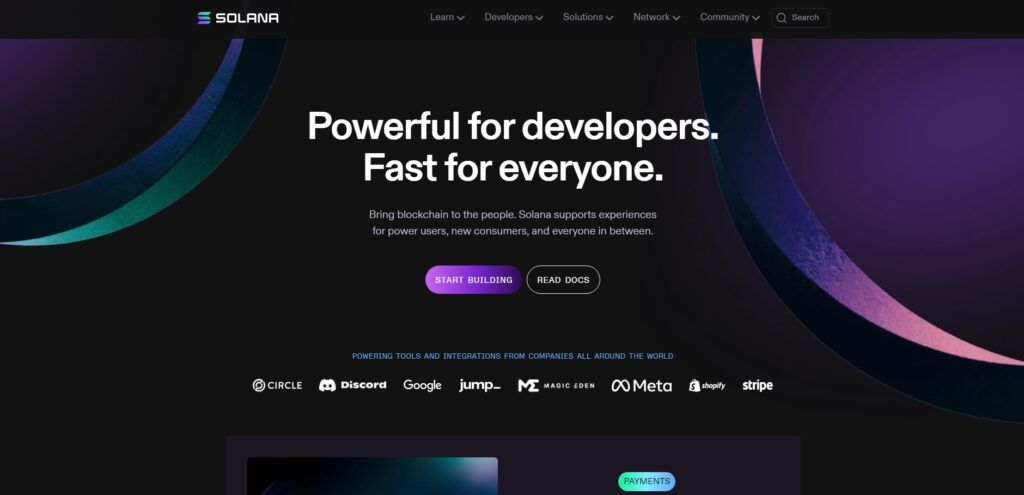
The announcement comes amid increased interest in restaking solutions, sparked by EigenLayer’s development of Ethereum restaking infrastructure over the past couple of months. For context, the total value locked (TVL) on EigenLayer increased from $400 million in late December 2023 to more than $16 billion at the start of May.
Restaking allows users to reuse their Proof-of-Stake (PoS) assets that are already staked to provide cryptoeconomic security to additional protocols. For example, staked SOL could be restaked to provide security for other Solana-based protocols simultaneously.








By Andrej Kovacevic
Updated on 18th July 2024